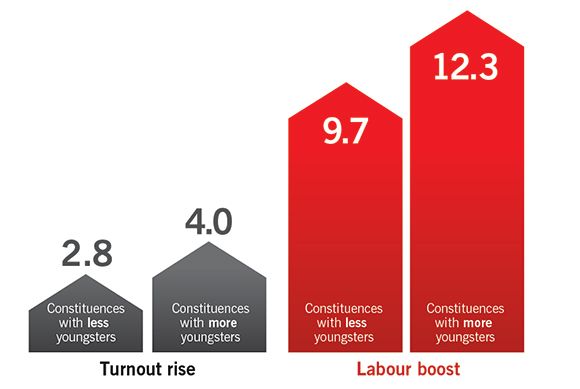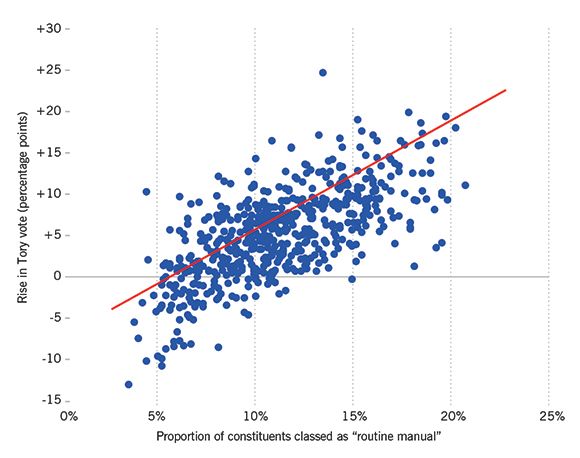Two nations, two swings
Remainia swung sharply, Leaveland barely budgedPoliticians like to talk of “one nation,” but the EU referendum seared Britain into two political halves—and that’s without reckoning with Scotland, dropped from all these numbers because June’s election proved once again it is another country entirely. Across the English and Welsh constituencies that voted “Remain,” Labour surged ahead, making for a sharp swing of 5.7 percentage points. By contrast, in “Leaveland,” there were lots of former Ukip votes to divide, and the Tories picked up more of them. As a result, both parties advanced in parallel, and our swingometer ticks a mere 1.2 points to the left.
Generation gain
The young really did come out for Corbyn

Labour’s pre-election talk of attracting apathetic young voters ran into scepticism. The age-break of the vote isn’t in yet, but already we can see—by separately crunching the constituencies with more young voters—signs of Jeremy Corbyn pulling it off. In seats where 18-24s make up more than 10 per cent of the electorate, turnout rose by 4.0 percentage points, markedly higher than the 2.8 point rise in seats where less than 7 per cent of the electorate are young. The surge in Labour’s vote share was also higher in seats with more young people. But the overall surge in Labour support is far too large to be explained by young people alone.
Class action
Old certainties lose their grip

Amid the humiliation of this hung parliament, Theresa May’s campaign talk of turning the Conservatives into the “workers’ party” will soon be forgotten, but perhaps that is a mistake. Even though she was caught out by Labour’s surge, she secured 42.4 per cent of the vote, the highest Tory total since Thatcher’s 1983 landslide. And we can see that May put on more votes where there are more voters in routine, manual work. This makes for a sharp contrast with Labour. Back in 1983, it emphasised control of industry, and the old class gap widened. But this year, Labour did more to attract students than machine operatives, and made the biggest strides well away from its old working-class heartlands, narrowing the traditional class gap.
Note: constituency EU referendum results are estimates from Chris Hanretty













